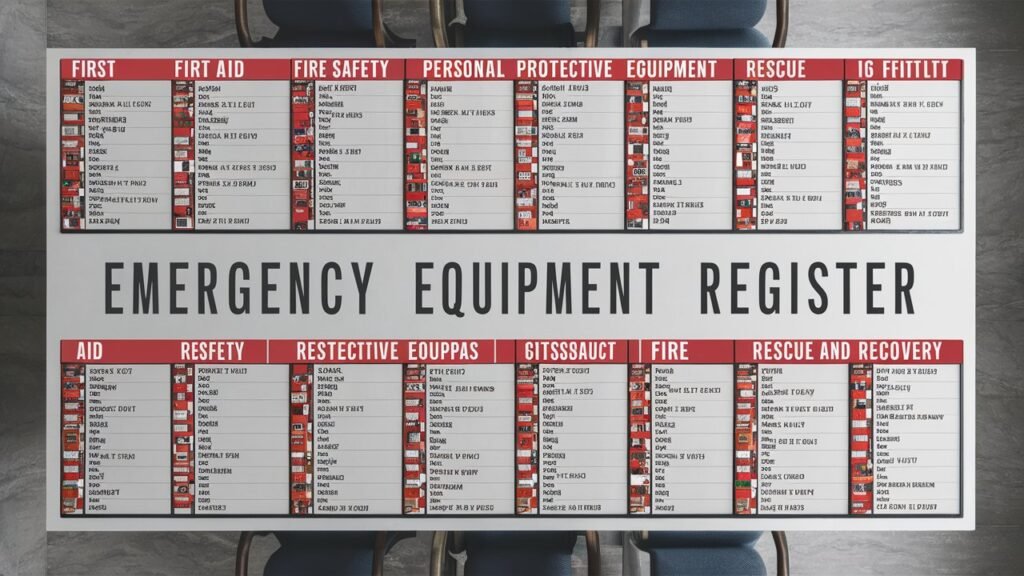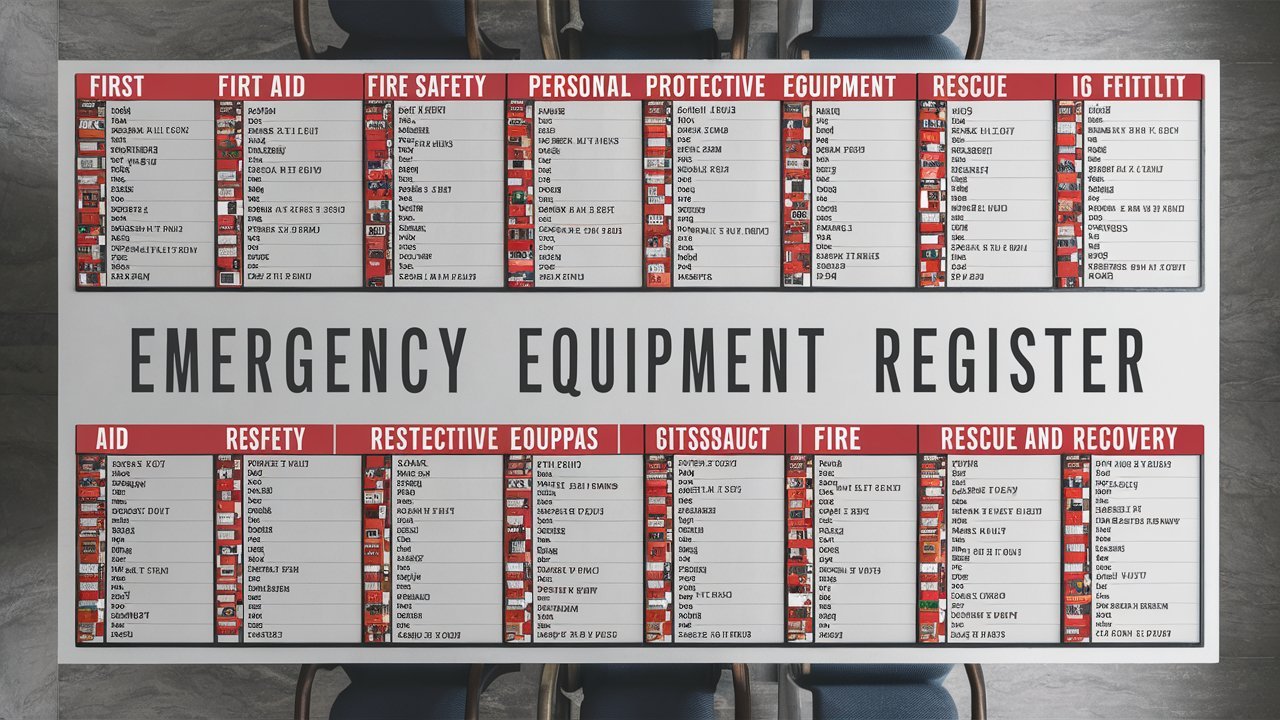In the realm of workplace safety, preparation is paramount. When emergencies strike, having a well-maintained emergency equipment register can be the difference between chaos and control. This comprehensive guide will walk you through the importance, creation, and utilization of an emergency equipment register, empowering you to safeguard your team and workplace effectively.

Understanding the Emergency Equipment Register
Defining the Emergency Equipment Register
An emergency equipment register serves as a centralized inventory of critical safety equipment within a workplace. It encompasses items such as fire extinguishers, first aid kits, emergency exits, and any other equipment crucial for mitigating risks and responding to emergencies swiftly.
The Significance of a Comprehensive Register
A comprehensive emergency equipment register is essential for ensuring workplace safety compliance and readiness. By documenting all essential safety equipment, organizations can identify gaps, schedule maintenance, and train personnel effectively.
Key Components of the Register
A well-structured emergency equipment register typically includes:
- Item Description: Detailed description of each safety item.
- Location: Precise location of the equipment within the workplace.
- Condition: Regularly updated status indicating whether the equipment is functional or in need of maintenance.
- Maintenance Records: Documentation of maintenance activities, inspections, and replacements.
- Expiration Dates: Tracking expiration dates for items such as fire extinguishers and medical supplies.
Creating Your Emergency Equipment Register
Conducting a Comprehensive Inventory
Begin by conducting a thorough inventory of all safety equipment across your workplace. This process involves identifying each item, documenting its location, and assessing its condition.
Organizing the Information
Once you’ve compiled the inventory, organize the information into a structured format. Consider using a spreadsheet or dedicated software to create a user-friendly register that can be easily accessed and updated as needed.
Assigning Responsibilities
Assign clear responsibilities for maintaining and updating the emergency equipment register. Designate individuals or teams responsible for conducting regular inspections, recording maintenance activities, and ensuring compliance with safety regulations.

Utilizing the Emergency Equipment Register
Training and Awareness
Ensure all employees are familiar with the emergency equipment register and understand its importance. Provide training on how to locate and use safety equipment effectively, emphasizing the role each item plays in emergency response protocols.
Regular Maintenance and Inspections
Schedule regular maintenance and inspections to ensure all safety equipment is in optimal condition. Create a maintenance calendar outlining tasks such as inspections, testing, and replacement of expired items.
Emergency Response Protocols
Integrate the emergency equipment register into your organization’s emergency response protocols. Ensure all employees know how to access the register during emergencies and understand their roles in utilizing safety equipment effectively.
Frequently Asked Questions (FAQs)
- How often should the emergency equipment register be updated?
- The emergency equipment register should be updated regularly, ideally after each inspection or maintenance activity.
- What should I do if I discover missing or damaged equipment?
- Immediately report any missing or damaged equipment to the designated safety officer or supervisor for prompt resolution.
- Can I use a digital format for the emergency equipment register?
- Yes, digital formats offer convenience and accessibility, provided they are regularly updated and securely stored.
- Who is responsible for conducting inspections and maintenance of safety equipment?
- Inspections and maintenance tasks are typically assigned to trained personnel or designated safety teams within the organization.
- What should be included in the maintenance records for safety equipment?
- Maintenance records should document inspection dates, findings, corrective actions taken, and any replacements or repairs performed.
- Is training on the emergency equipment register mandatory for all employees?
- Yes, all employees should receive training on locating and using safety equipment as part of their onboarding process and ongoing safety training initiatives.
Conclusion
In conclusion, an emergency equipment register is a fundamental tool for ensuring workplace safety and preparedness. By creating a comprehensive register, organizing information effectively, and integrating it into emergency response protocols, organizations can enhance their ability to protect employees and assets in times of crisis.

